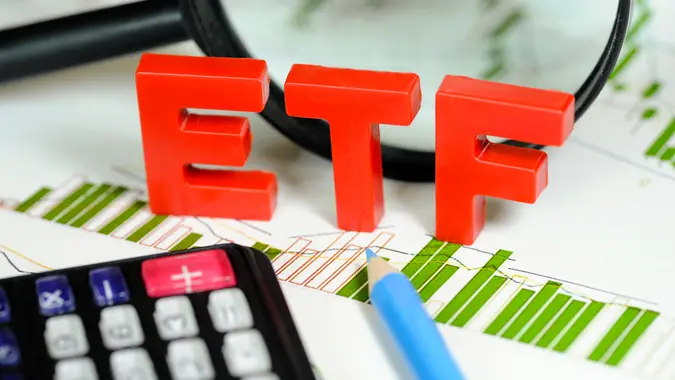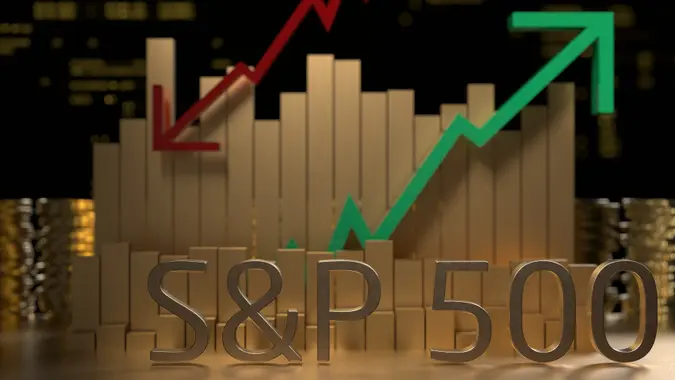Advertiser Disclosure
GOBankingRates works with many financial advertisers to showcase their products and services to our audiences. These brands compensate us to advertise their products in ads across our site. This compensation may impact how and where products appear on this site. We are not a comparison-tool and these offers do not represent all available deposit, investment, loan or credit products.
Ways To Spot a ‘Pump and Dump’ Scheme
 Written by
John Csiszar
Written by
John Csiszar

Commitment to Our Readers
GOBankingRates' editorial team is committed to bringing you unbiased reviews and information. We use data-driven methodologies to evaluate financial products and services - our reviews and ratings are not influenced by advertisers. You can read more about our editorial guidelines and our products and services review methodology.

20 YearsHelping You Live Richer

Reviewed by Experts

Trusted by Millions of Readers
A so-called “pump and dump” scheme is a way that unscrupulous investors manipulate markets to generate illegal profits. By making false or exaggerated claims about certain investments, these scam artists entice legitimate investors to pile into rapidly rising securities and then take quick profits. Typically, the unknowing victims are left with investments that then plummet in price, often ending up worthless.
While pump and dump schemes used to be directed primarily toward penny stocks, cryptocurrencies are now joining the fray as well. Here are some ways to identify a pump and dump scheme so that you can protect yourself and your investment portfolio.
Last updated: June 18, 2021
You Receive an Unsolicited Email
If you’re checking your email one day and you receive an unsolicited email about a stock or crypto, you might very well be on the receiving end of a pump and dump scheme. Pump and dump scammers are looking to reach the broadest audience possible to get money flowing into their targeted securities. One of the easiest ways to do this is to send out millions of unsolicited emails to potential targets. Even if only 0.01% of 1 million recipients actually click on the email and respond, that amounts to 100 people buying the touted security.
If someone sends you an unsolicited investment email, by definition they can’t have any idea about your personal investment objectives and risk tolerance. This means they are simply trying to entice as many people as possible into buying a security so that it runs up in price. Typically, these emails use compelling and forceful language to convince you that the time to buy is NOW and that the touted security or cryptocurrency is a “can’t miss opportunity.” The bottom line is that you should never put money into an investment that you hear about through an unsolicited email from an unknown person.
A Security Price Skyrockets
One of the easiest ways to convince unsuspecting investors to pile into a security is when its price is skyrocketing. After all, investors buy stocks and cryptocurrency to make money, and when a security is jumping in price by leaps and bounds, it’s hard not to be interested. But when a skyrocketing price coincides with a pump and dump email or message board campaign, it pays to be suspicious. Typically, this is evidence that the pump and dump scheme is actually working. As investors get sucked into the scam, demand far outstrips supply, and prices soar.
It’s important to note that there are indeed some cases in which a stock or crypto can suddenly turn on a dime and rocket higher in price based on actual, fundamental changes that support the new price. That’s why it’s important to pay attention to what is driving the price higher. If it’s based on speculation or rumors tossed about by emails or message boards, the price is just as likely to plummet back to Earth at some point. While you could certainly get lucky and ride the price higher for a while, there’s no way of knowing when the house of cards will fall, and you could easily end up getting burned in the end.
A Security’s Volume Explodes
Just like a sudden, astronomical price increase is a sure sign of suspicious activity, so is an accompanying surge in volume. After all, prices can’t go higher without rising volume in which buyers outstrip sellers. Thinly traded stocks and cryptocurrencies are typically the types of securities targeted by scammers because it only takes a small increase in volume to move prices higher. When a stock that normally trades a few thousand shares per day suddenly jumps to a few million, price moves can be astronomical. Short, sharp price spikes with no accompanying fundamental changes are typical indicators of pure speculation, and in many cases, of a pump and dump scheme.
Massive volume increases, by definition, can’t last forever. As soon as volume starts drying up on these types of investments, prices can fall dramatically. By the time you hear about or notice a stock or crypto that is flooded with new volume, it’s likely you’re closer to the end of the price jump than the beginning.
Social Media and Message Boards Light Up
Technology moves so rapidly that email scams are already becoming obsolete. Social media sites and online message boards are the “email of the future,” with a broader reach that requires even less effort by scammers to reach millions of captive readers. Message boards promoting stocks have been all the rage in 2020 and 2021, as so-called “meme stocks” or “YOLO stocks” like GameStop and AMC Entertainment have skyrocketed. In this modern-day version of pump and dump, a group of message board participants encourage others to buy stocks with certain characteristics, typically those with low prices and high short interest. As the shorts are forced to cover, share prices jump rapidly.
Various “noble” reasons for these message board assaults have been promulgated, such as the desire to hurt hedge funds and “big investors” that take advantage of stocks by shorting them. But the more likely reason is that people just want to make money, so they get together and push a stock so they can sell out at the top. Take GameStop, for example. That stock has a 52-week low of $3.77 per share, but it ran up to a 52-week high of $483. Those who rode the stock all the way up are now sitting on shares worth just $216, a loss of more than 55%.
The Information Source Is Unlicensed or Unregistered
Legitimate, registered, fiduciary financial advisors are required by law to recommend investments that are in your best interest. Unregistered, anonymous touts or “advisors” have no legal obligations to you at all. More often than not, their only interest is in putting money into their own pockets. Anytime you get unsolicited advice from someone who is not registered or licensed, take it with a huge grain of salt. Touts are essentially salespeople that get paid by convincing you to cough up money for investments that can make them money, not you.
If you find yourself getting sucked into a pitch from one of these scam artists, do yourself a favor and conduct your own outside research. It’s theoretically possible that underneath all of the hype there is an investment case for a stock or crypto that someone pitches to you. However, if it’s from an unregistered or unlicensed source, the odds that you’re being subjected to a pump and dump scheme rise dramatically.
More From GOBankingRates
Share this article:




You May Also Like

The Big Investing Mistake Even the Smartest People Make, According to Money Psychology Expert
September 08, 2025
7 min Read




Self-Made Millionaire Codie Sanchez Shares the Best $1K Investment She Made
September 05, 2025
7 min Read

3 Investments That Equal the 'Perfect Portfolio' -- How Anyone Can Invest in Them
September 05, 2025
7 min Read


If You Invested $1,000 a Year in the S&P 500, Here's How Long It Would Take To Become a Millionaire
September 05, 2025
7 min Read



5 Portfolio Diversification Techniques Millionaires Use -- and You Can Use, Too
September 05, 2025
7 min Read

Multi-Millionaire Says Timing the Market Is Impossible - Here's What You Should Do Instead
September 05, 2025
7 min Read


I Asked ChatGPT for Warren Buffett's Best Lesson for Everyday Investors
September 03, 2025
7 min Read

2 Reasons Why Warren Buffett Is Better at Weathering Market Upheaval Than Elon Musk
September 02, 2025
7 min Read

Make your money work for you
Get the latest news on investing, money, and more with our free newsletter.
By subscribing, you agree to our Terms of Use and Privacy Policy. Unsubscribe at any time.


Thanks!
You're now subscribed to our newsletter.
Check your inbox for more details.



Sending you timely financial stories that you can bank on.
Sign up for our daily newsletter for the latest financial news and trending topics.
For our full Privacy Policy, click here.
Looks like you're using an adblocker
Please disable your adblocker to enjoy the optimal web experience and access the quality content you appreciate from GOBankingRates.
- AdBlock / uBlock / Brave
- Click the ad blocker extension icon to the right of the address bar
- Disable on this site
- Refresh the page
- Firefox / Edge / DuckDuckGo
- Click on the icon to the left of the address bar
- Disable Tracking Protection
- Refresh the page
- Ghostery
- Click the blue ghost icon to the right of the address bar
- Disable Ad-Blocking, Anti-Tracking, and Never-Consent
- Refresh the page


